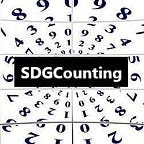SDG 6 Indicators- 2017 Updates
The updated list of SDG #6 Indicators since July 2016, with changes highlighted.
In summer 2016, we created a series of Medium stories listing the targets and indicators for the Sustainable Development Goals. Since then, meetings have been held that have altered and edited the global indicators framework. Here, we highlight the changes and additions that have been made since July 2016 up to April 2017, to update our indicator stories before the High Level Political Forum takes place in July 2017.
*Changes and additions to indicators are italicized, along with notes from the IAEG-SDGs as to the purpose of the edit. Goal 6 has no changes, with Indicators 6.3.2, 6.4.1, and 6.6.1 classified as Tier 3.
SDG 6: Clean Water and Sanitation — Indicators by Target
6.1. By 2030, achieve universal and equitable access to safe and affordable drinking water for all
Indicator 6.1.1: Proportion of population using safely managed drinking water services
6.2. By 2030, achieve access to adequate and equitable sanitation and hygiene for all and end open defecation, paying special attention to the needs of women and girls and those in vulnerable situations
Indicator 6.2.1: Proportion of population using safely managed sanitation services, including a hand-washing facility with soap and water
6.3. By 2030, improve water quality by reducing pollution, eliminating dumping and minimizing release of hazardous chemicals and materials, halving the proportion of untreated waste water and substantially increasing recycling and safe reuse globally
Indicator 6.3.1: Proportion of wastewater safely treated
Indicator 6.3.2: Proportion of bodies of water with good ambient water quality
6.4. By 2030, substantially increase water-use efficiency across all sectors and ensure sustainable withdrawals and supply of freshwater to address water scarcity and substantially reduce the number of people suffering from water scarcity
Indicator 6.4.1: Change in water-use efficiency over time
Tier 3, Fast Track; Reviewed at 5th IAEG-SDG meeting; More information on terminology is requested
Indicator 6.4.2: Level of water stress: freshwater withdrawal as a proportion of available freshwater resource
6.5. By 2030, implement integrated water resources management at all levels, including through transboundary cooperation as appropriate
Indicator 6.5.1: Degree of integrated water resources management implementation (0- 100)
Indicator 6.5.2: Proportion of transboundary basin area with an operational arrangement for water cooperation
6.6. By 2020, protect and restore water-related ecosystems, including mountains, forests, wetlands, rivers, aquifers and lakes
Indicator 6.6.1: Change in the extent of water-related ecosystems over time
6.a. By 2030, expand international cooperation and capacity-building support to developing countries in water- and sanitation-related activities and programs, including water harvesting, desalination, water efficiency, waste water treatment, recycling and reuse technologies
Indicator 6.a.1: Amount of water- and sanitation-related official development assistance that is part of a government-coordinated spending plan
6.b. Support and strengthen the participation of local communities in improving water and sanitation management
Indicator 6.b.1: Proportion of local administrative units with established and operational policies and procedures for participation of local communities in water and sanitation management
